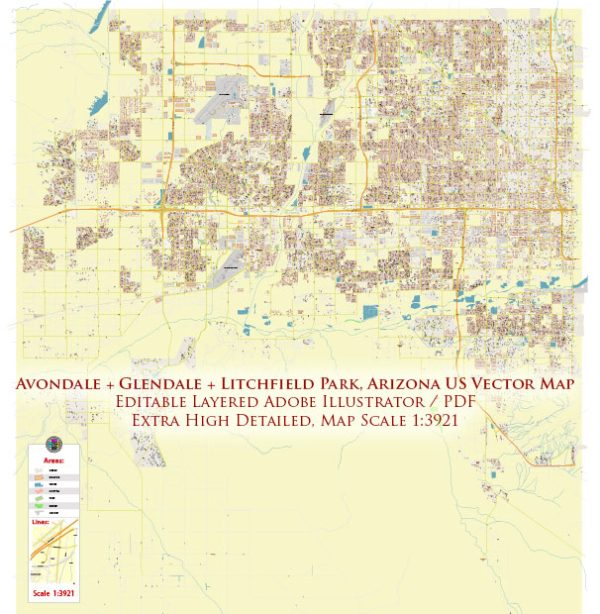Avondale and Glendale are neighboring cities located in the Phoenix metropolitan area in the state of Arizona, USA. The history of urban development in these cities reflects the broader trends and challenges that have characterized many suburban communities in the American Southwest.
Glendale, Arizona:
- Early Settlement (Late 1800s): The history of Glendale dates back to the late 1800s when William J. Murphy, a canal builder from Phoenix, purchased land in the area and established the Arizona Canal Company. This canal played a crucial role in the development of the region as it allowed for irrigation and agriculture, which attracted settlers.
- Agriculture and Growth (Early 20th Century): Glendale primarily started as an agricultural community with cotton, citrus, and alfalfa as major crops. The city’s growth was closely tied to its agricultural success, and it began to establish itself as a center for farming and ranching.
- Post-War Expansion (Mid-20th Century): The post-World War II period saw significant population growth in the Phoenix metropolitan area, including Glendale. This growth was driven by the availability of affordable land, suburban lifestyle preferences, and the development of infrastructure, including highways.
- Sports and Entertainment (Late 20th Century): In the late 20th century, Glendale became well-known for its sports and entertainment offerings. The city is home to the University of Phoenix Stadium, where the Arizona Cardinals of the National Football League (NFL) play, as well as the Gila River Arena, where the Arizona Coyotes of the National Hockey League (NHL) play. These developments have had a substantial impact on Glendale’s economy and urban character.
- Modern Development: Today, Glendale is a mix of residential, commercial, and industrial areas. It has seen ongoing urbanization and growth as the Phoenix metropolitan area has continued to expand.
Avondale, Arizona:
- Early Settlement (Early 20th Century): Avondale, like many communities in the Phoenix area, started as a rural settlement with a focus on agriculture. Avondale was incorporated in 1946, and the town’s name was chosen for its scenic surroundings.
- Agriculture and Industry: Avondale’s early history was centered around agriculture, particularly cotton and alfalfa farming. In the mid-20th century, the city experienced some industrial development, including the establishment of manufacturing and processing plants.
- Residential Growth (Late 20th Century): Avondale, much like neighboring Glendale, saw a surge in population and urban development in the post-World War II era. As Phoenix’s population expanded, Avondale became an attractive option for suburban living.
- Economic Diversification: In recent years, Avondale has made efforts to diversify its economy by attracting businesses and industries, as well as promoting education and cultural events. This diversification has contributed to the city’s economic stability and growth.
- Infrastructure and Transportation: Avondale has worked on improving its infrastructure, including road networks and public transportation, to accommodate its growing population and foster economic development.
In summary, both Avondale and Glendale have a shared history rooted in agriculture and suburbanization, driven by the post-World War II population boom in the Phoenix metropolitan area. Over time, these cities have evolved and adapted to changing economic and cultural trends while maintaining their distinct identities within the greater Phoenix region.


 Author: Kirill Shrayber, Ph.D.
Author: Kirill Shrayber, Ph.D.